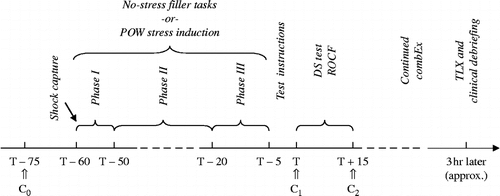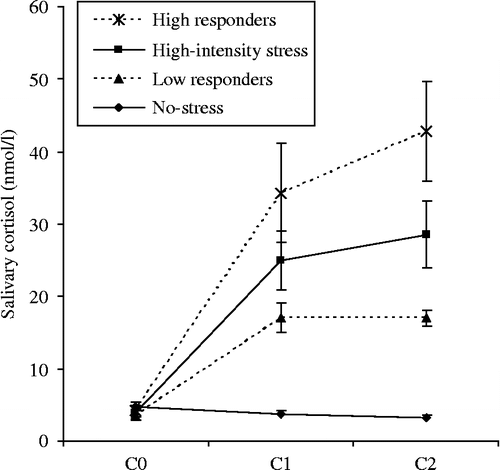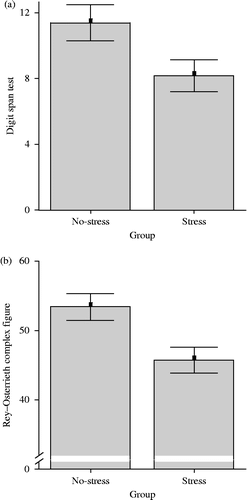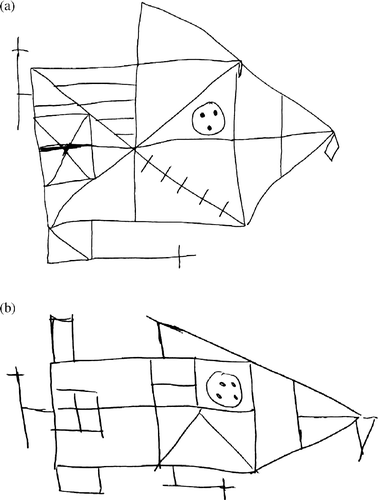Figures & data
Figure 1. Experimental time frame (minutes) for both groups (no-stress vs. stress), including: baseline saliva sampling (C0 at T − 75), filler tasks or POW stress induction (Phases I–III), test instructions, performance tests (DS test and ROCF), cortisol saliva sampling (C1 at T and C2 at T+15), completion of NASA TLX, and clinical debriefing. Timings are in minutes, unless stated otherwise.

Figure 2. Salivary cortisol concentrations (means ± SEM) for the no-stress control (n = 14) and the stress group (n = 13) (C0 at T-75 min, C1 at T, and C2 at T+15 min). Exclusively for information purposes, the figure includes differences in mean salivary cortisol increment for high (n = 6) vs. low cortisol responders (n = 7) in the stress group (cut-off by median split).

Figure 3. Representation of the mean performance scores ( ± SEM) for the no-stress control (n = 14) and the stress group (n = 13) on the memory performance tasks; the DS test for WM (a) and the ROCF for visuo-spatial declarative memory (b). In (a) and (b) the No-stress and Stress group means are significantly different from each other (p < 0.05, p < 0.01).

Figure 4. Two representative performance examples of the ROCF for the no-stress control (a) vs. the stress (b) group. While the original ROCF strongly resembles Figure 4(a), a full view of the original ROCF can be consulted in Knight and Kaplan (Citation2003) (The handbook of ROCF usage: Clinical and research applications. Psychological Assessment Resources, Inc., Lutz, FL, USA).
